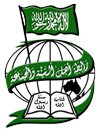
Atatürk ("Father Turk" — the name he adopted in 1935) now embarked on an ambitious and radical programme to turn Turkey from a Muslim polity into a modern state. The Republic was proclaimed in 1923, with Ankara as its capital, Kemal as executive President, and a single political party. An elected Parliament was added by the 1924 constitution. The dominance of Islam in public life was ended when the Caliphate was abolished in 1924; religious orders were disbanded; religious property was seized; religious instruction was curtailed and a secular educational system established; the Islamic legal system was replaced by a European one; and, in 1928, Islam itself was disestablished. The fez and the veil were forbidden, the Latin alphabet was substituted for the Arabic, and, in 1934, women were enfranchised. Ataturk revitalized the economy, created mixed state-private banks, protected domestic industry and, on étatiste Kemalist principles, responsibility for investment and preventing foreign capital entering Turkey was assumed by the state.
Link
Get more info irom Wikipedia:

It is evident from his personal journal that Mustafa Kemal began to develop the concepts of his social revolution very early. Mustafa Kemal constantly discussed with his staff on issues like abolishing the veiling of women and integration to females to social life and developed conclusions.
...
Mustafa Kemal acquired the consent of İnönü, Çakmak and Özalp before abolition of the caliphate. March 1, 1924 at the assembly; "The religion of Islam be elevated by ceasing to be a political instrument, as had been the case in the past."[
...
Fez symbolized the tie to the past to Mustafa Kemal.[42] He was determined to force its abandonment and finalize a series of dress reforms which its history starts by Mahmud II.[42] Like the Mahmud II, and other Ottoman reformists, fanaticism and reaction had raise obstacles in his path.[42] Mustafa Kemal first made the hat compulsory to the civil servants.[
...
The visual and the plastic arts, whose development had on occasion been arrested by some Ottoman officials claiming that the depiction of the human form was idolatry, were highly encouraged and supported by Atatürk, and these flourished in the new Turkish republic. Many museums were opened; architecture began to follow modern trends; and classical Western music, opera, and ballet, as well as the theatre, also took greater hold.
Read full article
&
Turkey - factbook

